VISAS
Do you need a visa for New Zealand?
If you are an Australian citizen, you do not need one, but your passport must be valid for at least 3 months.
There are many countries that New Zealand call visa waiver countries, but this still requires you to apply for a New Zealand Travel Authority (a NZeTA) on line. See below for those countries that are eligible:
Andorra, Argentina, Austria, Bahrain, Belgium, Brazil, Brunei, Bulgaria, Canada, Chile, Croatia, Cyprus, Czech Republic, Denmark, Estonia citizens only, Finland, France, Germany, Greece, Hong Kong — residents with HKSAR or British National–Overseas passports only, Hungary, Iceland, Ireland, Israel, Italy, Japan, Korea South, Kuwait, Latvia citizens only, Liechtenstein, Lithuania citizens only, Luxembourg, Macau only if you have a Macau Special Administrative Region passport, Malaysia, Malta, Mauritius, Mexico, Monaco, Netherlands, Norway, Oman, Poland, Portugal if you have the right to live permanently in Portugal, Qatar, Romania, San Marino, Saudi Arabia, Seychelles, Singapore, Slovak Republic, Slovenia, Spain, Sweden, Switzerland, Taiwan if you are a permanent resident, United Arab Emirates, United Kingdom (UK) if you are travelling on a UK or British passport that shows you have the right to reside permanently in the UK, United States of America (USA) including USA nationals, Uruguay and the Vatican City.
New Zealand has very strict quarantine laws, so don’t bring in any food or animal products into the country. It is also a good idea to clean your walking shoes/boots thoroughly to make sure you haven’t got any mud on them. (or hidden bugs or microbes in the mud). Failure to declare any restricted items will result in hefty fines so leave your local produce at home or eat it on the flight.
TRANSPORT
Flights to New Zealand are regular as tourism a big part of New Zealand’s economy is tourism, nearly 10% if you count all the indirect activity. It makes up a wapping 20% of New Zealand’s total exports. Here are some of the airlines that fly to New Zealand.
Air New Zealand (This is New Zealand’s national carrier)
Cathay Pacific
Emirates
Thai Airways
Malaysia Airlines
Qantas
Singapore Airlines
It is worthwhile flying into where you are going to most of your activity. Many countries have direct flights to Auckland and also Queenstown. Flying from Australia, there are many extra choices to where you can land. Christchurch is a good place to arrive at if you intend on driving up the east coast of the South Island to Blenheim, Queen Charlotte or the Abel Tasman. As the drive is magnificent. If you walking the Milford Track it makes more sense to land in Queenstown. Or if you want to visit the Bay of Islands, then Auckland is the most central place to land.
FOOD & WINE
New Zealand punches well above its weight when it comes to food.
For those people that are on restricted diets, like vegetarian, Halal or just want to eat similar food to home (like Indian food for example), there is no shortage of options. New Zealand prides itself on its quality of fresh produce and the sheer variety of choice. New Zealand contemporary cuisine is influenced by European cuisine, but there are other influences beginning to make their mark on the New Zealand palette, such as Thai, Indian and Vietnamese.
New Zealand has come along way form fish and chips and steak on a barbeque. There’s said to be a distinct Pacific Rim cuisine in New Zealand, so you can expect to eat plenty of seafood like mussels, lobster, oysters and fresh fish. There’s also the award-winning cheeses and the famous lamb that New Zealand is famous for.
The wine-growing regions of New Zealand have become world renown over the last 30 years or so. The main places or regions to visit are namely: Marlborough, Hawkes Bay, Auckland, Wairarapa, Waipara Valley and Central Otago.
THINGS TO DO
New Zealand is famous for its hikes and outdoor activity. Milford Sound, Routeburn, Abel Tasman, Queen Charlotte Track, Bay of Islands and Queenstown are all principal to New Zealand’s outdoor adventure product. Other walks include the Heaphy Track, Tongariro Circuit, Kepler Track, Rakiura and the Te Aroroa (3,000kms walking from end to end of New Zealand), but all of these hikes require that you are willing to camp or stay in rudimentary huts.
Beyond the walking, there are many scenic routes to drive in New Zealand. You will need an international driver’s licence to drive in New Zealand, accompanied by your own country driver’s licence. New Zealanders drive on the left-hand side of the road and vehicles seat the driver on the right, like the UK. New Zealand’s roads travel over a variety of terrain, so be ready for roads that are sometimes narrow, undulating and windy with plenty of severe cornering. Many of the roads are single lane in each direction without any barriers in between them. For more information, see NewZealand.com. The narrow roads require that you need to plan to take more time getting from place to place.
There is, of course also the wineries as mentioned above. There are literally hundreds of them to visit. Some of the areas have become world-famous like the Marlborough region.
Kayaking in the Abel Tasman Park is very popular as are all the other water activities that you can partake in; sailing, diving, surfing and fishing, to name a few. Sailing is very popular in the Bay of islands and it is possible to book a charter to explore the islands.
HEALTH
New Zealand is the first world so there is very little to worry about from a disease point of view.
However, if you are planning on going off-grid and hiking the Te Aroroa, for example, makes sure you have a comprehensive first aid kit.



 30 years' experience providing walking holidays worldwide
30 years' experience providing walking holidays worldwide
